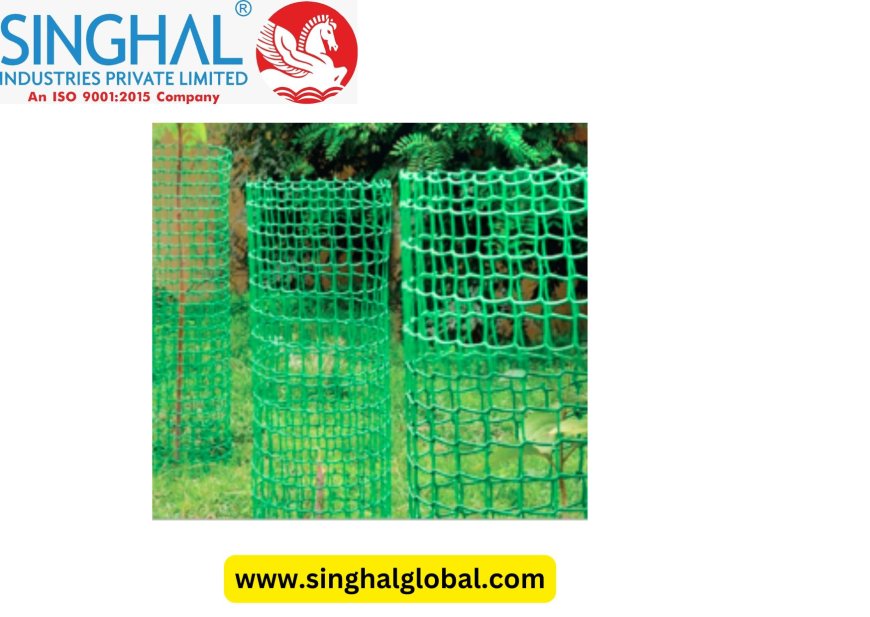The Importance of HDPE Tree Guards in Sustainable Forestry

As the world faces increasing environmental challenges, the significance of protecting our trees and forests has never been more critical. HDPE tree guards have emerged as an essential tool in sustainable forestry practices, offering effective protection for young trees against various threats. This article will explore the benefits of tree-guard plastic, the role of tree-guard manufacturers, and how these protective solutions contribute to healthier and more resilient ecosystems.
What is an HDPE Tree Guard?
An HDPE tree guard is a protective barrier made from high-density polyethylene (HDPE) designed to shield young trees from physical damage, pests, and harsh environmental conditions. These guards are typically cylindrical in shape, wrapping around the base of a tree to create a protective enclosure. They come in various sizes and designs, allowing for customization based on the specific needs of the tree species and the environment.
Benefits of Using HDPE Tree Guards
- Protection from Herbivores
One of the primary purposes of tree guard plastic is to protect young trees from herbivorous animals such as deer, rabbits, and livestock. These animals can cause significant damage by gnawing on the bark or even uprooting young saplings. HDPE tree guards effectively deter such threats, ensuring that young trees have a chance to grow unharmed.
- Defense Against Mechanical Damage
In urban and suburban areas, young trees are often at risk from mechanical damage caused by lawn mowers, equipment, and foot traffic. An HDPE tree guard provides a sturdy barrier that prevents accidental injury to the tree, helping it establish a healthy root system and promoting strong growth.
- Microclimate Regulation
Tree guard plastic can help create a microclimate around young trees. By retaining moisture and protecting against wind and extreme temperatures, these guards foster a more favorable growing environment. This can be especially beneficial during the critical early stages of growth when young trees are most vulnerable.
- Durability and Longevity
One of the standout features of HDPE is its durability. Tree guard manufacturers create products that are resistant to UV rays, moisture, and extreme temperatures, ensuring that the guards remain functional for several years. This longevity reduces the need for frequent replacements, making them a cost-effective solution for tree protection.
- Eco-Friendly Options
As environmental awareness grows, many tree guard manufacturers are now producing eco-friendly HDPE tree guards that are recyclable and made from post-consumer materials. These sustainable options align with the values of conservation and responsible forestry practices.
How to Choose the Right Tree Guard
When selecting HDPE tree guards, several factors should be considered to ensure you find the most effective solution for your trees:
1. Size and Fit
Choose guards that fit snugly around the tree's base without constricting its growth. The size should be appropriate for the species and age of the tree. A properly fitting guard will provide optimal protection without hindering the tree’s natural development.
2. Design Features
Consider the design features of the tree guard. Some models include ventilation holes that allow for airflow while still providing protection. This can help prevent moisture buildup and fungal growth, which can harm young trees.
3. Material Quality
Ensure that the tree guard is made from high-quality HDPE that is resistant to UV rays and other environmental factors. This quality ensures longevity and effectiveness in protecting your trees.
4. Aesthetic Considerations
In urban settings, the appearance of tree guards can be essential. Many manufacturers offer a variety of colors and designs that blend well with the surrounding landscape while still providing the necessary protection.
The Role of Tree Guard Manufacturers
Tree guard manufacturers play a crucial role in the forestry and landscaping industries. They are responsible for creating innovative and effective products that meet the diverse needs of consumers and the environment. These manufacturers are continually researching and developing new materials and designs to enhance the effectiveness of tree guards.
Moreover, many manufacturers are committed to sustainable practices, focusing on creating products that are not only effective but also environmentally friendly. By sourcing recycled materials and ensuring that their products are recyclable, they contribute to a more sustainable future.
Conclusion
HDPE tree guards are an essential investment for anyone looking to protect young trees from various threats. Their durability, versatility, and ability to create a conducive growing environment make them a popular choice among landscapers, foresters, and gardeners. When choosing the right Tree guard plastic, it is vital to consider factors such as size, design, and material quality.
By supporting reputable tree guard manufacturers, consumers can ensure they are getting high-quality products that contribute to sustainable forestry practices. As we work towards a greener future, investing in protective solutions like HDPE tree guards will play a crucial role in fostering healthy and resilient ecosystems.
Here Are Three Related For Hdpe tree guard
Q1: How do I install HDPE tree guards?
Ans. Installing HDPE tree guards is straightforward. Simply position the guard around the base of the tree, ensuring it fits securely. Stake the guard into the ground if necessary, to prevent it from being displaced by wind or animals.
Q2: Can I reuse tree guards?
Ans. Yes, tree guard plastic is durable and can often be reused for multiple planting seasons. Just ensure they are cleaned and inspected for any damage before reinstallation.
Q3: Are HDPE tree guards suitable for all tree species?
Ans. While HDPE tree guards are suitable for most young trees, it’s essential to choose the correct size and design based on the specific tree species and its growth habits to ensure optimal protection.
What's Your Reaction?






















